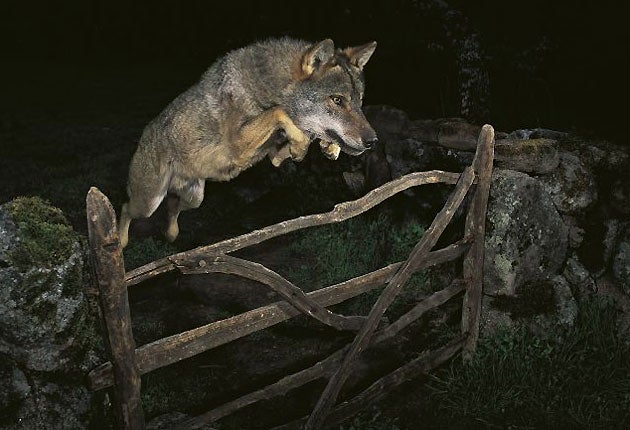Too good to be true? Museum investigates winning photo

Your support helps us to tell the story
From reproductive rights to climate change to Big Tech, The Independent is on the ground when the story is developing. Whether it's investigating the financials of Elon Musk's pro-Trump PAC or producing our latest documentary, 'The A Word', which shines a light on the American women fighting for reproductive rights, we know how important it is to parse out the facts from the messaging.
At such a critical moment in US history, we need reporters on the ground. Your donation allows us to keep sending journalists to speak to both sides of the story.
The Independent is trusted by Americans across the entire political spectrum. And unlike many other quality news outlets, we choose not to lock Americans out of our reporting and analysis with paywalls. We believe quality journalism should be available to everyone, paid for by those who can afford it.
Your support makes all the difference.A photographer captures the split-second moment in which an airborne Iberian wolf clears a farm gate in search of supper. The startling image is selected from 43,135 entries, and Jose Luis Rodriguez is hailed as the Environment Wildlife Photographer of the Year.
Except rather than touting for pre-Christmas visitors to the winners' exhibition, staff at the Natural History Museum yesterday opened an investigation after it emerged that the image may have breached competition rules and could result in the photographer being stripped of his title.
The issue centres around allegations that the image featured an “animal model” raised in captivity, rather than capturing the spontaneous behaviour of a wild wolf. “I wanted to capture a photo in which you would see a wolf in act of hunting – or predation – without blood,” Mr Rodriguez told the BBC at the time of his victory. His narrative is alleged to have given the impression that he had found a farmer who was willing to allow a wild wolf on his land.
The Spanish photographer snapped the Iberian wolf – a subspecies of the grey wolf – in his home country after initially fearing the animals would be too wary to capture. He called the image The Storybook Wolf, said that he had used a custom-built infrared trap to snap the creature as it jumped into the air.
But yesterday the competition organisers confirmed that they had received alleged evidence that the wolf may have been tamed and held in captivity, contravening rules that any use of captive animals must be declared upfront.
A spokeswoman for the Natural History Museum, which co-owns the competition with BBC Wildlife Magazine, said it was “aware of an allegation” regarding the photograph's “veracity”. “We are investigating this thoroughly with the Judging Panel and will report back in the New Year once our investigations are completed,” it said. “Mr Rodriguez strongly denies any wrongdoing or breach of the competition rules.”
Kingsley Marten, the managing director of the Association of Photographers, said that competition entrants should “respect the rules of competitions, designed to provide contestants with a level playing field”, something that is becoming increasingly difficult to monitor in wake of the rapid technological advancements in photography and the relative meaning people may wish to take from constraints shown in the rules.
He added that the rules, which clearly state that images of captive animals must be declared and that judges will take preference to images taken in free and wild conditions, are difficult to check and could raise semantic arguments that may need to be sharpened next year. “A wild animal held within the confines of a Zoo could easily be classed as captive, but could you apply the same definition to a relatively tame wolf that was free to roam a 2,000 hectare gaming reserve?”
Sponsored by environmental services company, Veolia, the annual competition is one of the most prestigious in the world, each year attracting thousands of budding and professional photographers in search of the £10,000 cash prize as well as industry fame and notoriety. It culminates in the winning and commended images displayed at the Natural History Museum, which subsequently tours around the world. This year it received 43,135 entrants from 91 countries.
The news is likely to bring flushed faces to some of the contest's esteemed judging panel, all of whom have been asked to reconvene in wake of the investigation. They include wildlife photographer Jim Brandenburg and Zoologist Mark Carwardine who hailed the photo as a triumph, saying it had “captured thousands of years of human-wolf interaction in just one moment”.
Join our commenting forum
Join thought-provoking conversations, follow other Independent readers and see their replies
Comments